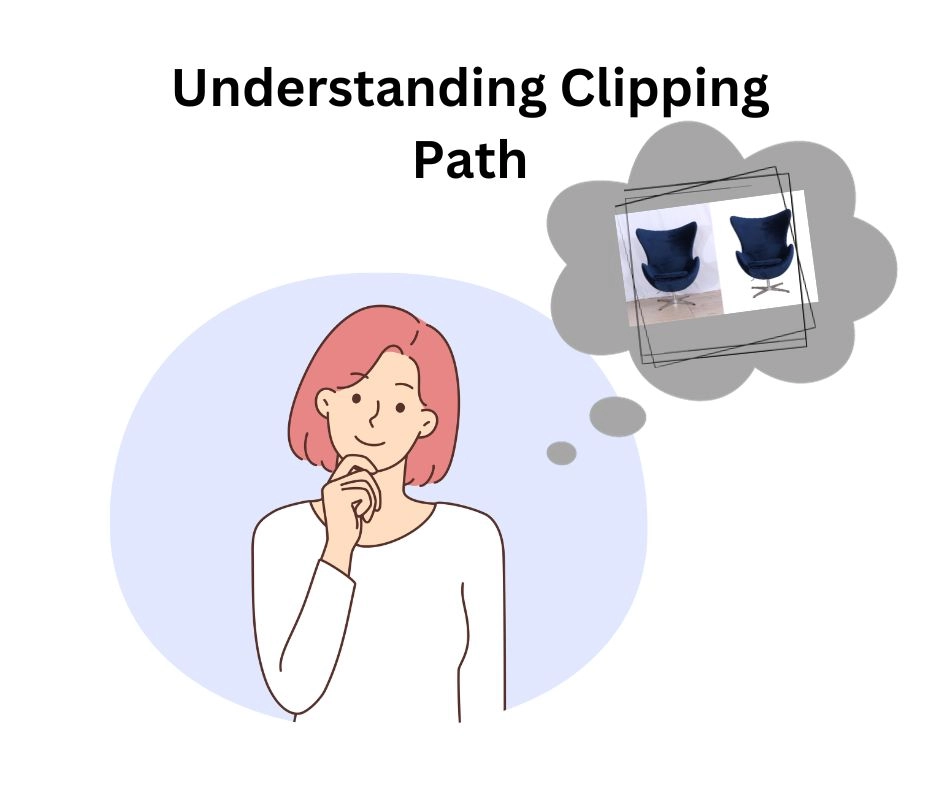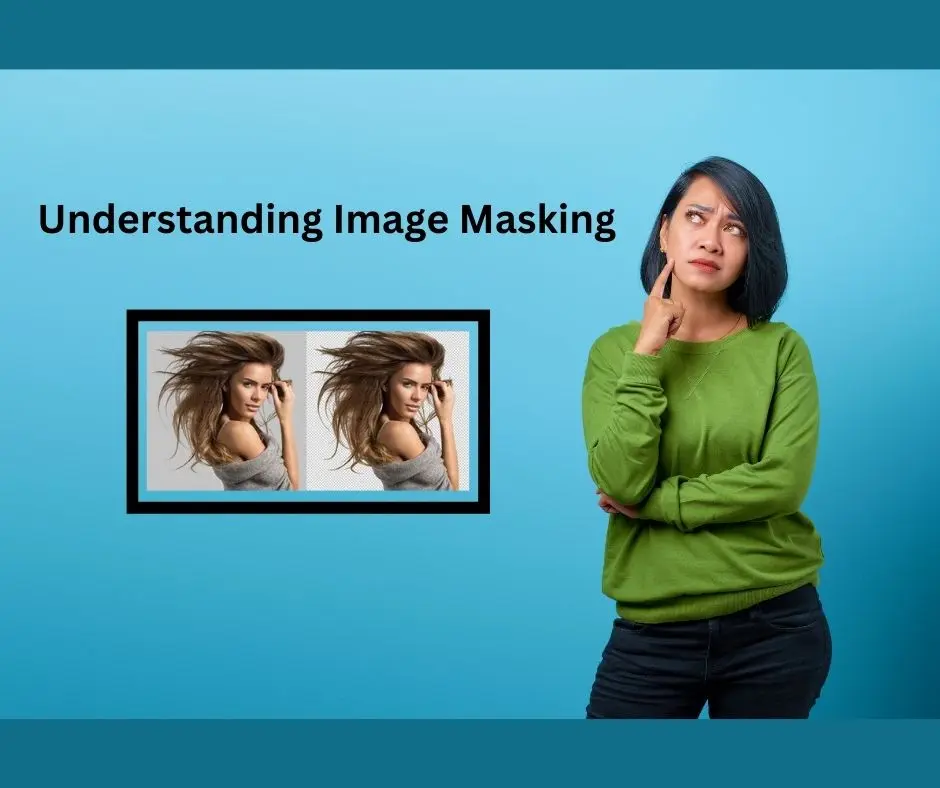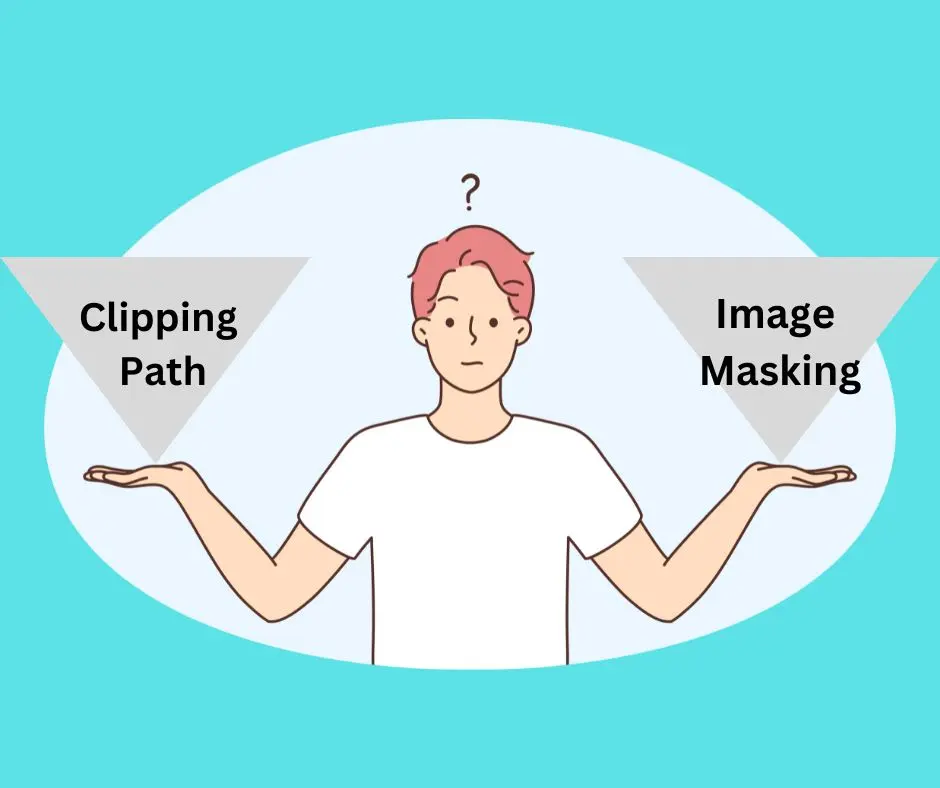let’s talk about some graphic design magic – Clipping Path and Image Masking Service. Ever wondered how those stunning images on your favorite websites or in ads are created? Well, these two techniques are the invisible champions who make it all possible.. They might sound like techy terms, but they’re essentially the artists’ tools in the digital world, helping to make images pop. So, let’s look at what distinguishes Clipping Path and Image Masking Services and why they are so important in the world of images.
Understanding Clipping Path Service
1 Definition and Basics:
Clipping Path is similar to digital cutters and glue in that it involves drawing a line around an object to neatly cut it out from its background. It’s the technique to use when you want a clean and sharp separation between the main subject and everything else.

2 Types of Clipping Paths:
- Basic: For simple stuff with straight lines.
- Compound: When things get a bit fancy with multiple paths for complex objects.
- Complex: The heavy-duty version for intricate details, like hair that refuses to stay in place.
3 Where You’ve Seen It:
- Online shopping: Ever noticed how products on e-commerce sites look so polished and consistent? Thank Clipping Path for that.
- Ads: Advertisers love it to highlight specific elements and make them stand out.
- Catalogs and brochures: Gives that professional touch for a picture-perfect presentation.
4 Challenges:
The details: When it comes to fussy details like hair or tiny textures, getting it just right can be difficult. It’s like a precision game that requires a steady hand and an attentive eye.
Unmasking Image Masking Service:

1 Definition and Basics:
Masking is used as a strategy to hide, while opacity to blend the changes with other elements. This Masked Retouch technique shares all three concepts: creating an image layer of pixels (mask), deciding on which parts will be hidden or shown, and how transparent they must look after blending inside another pixel area. Layer Masking: Unlike Clipping Path, this method employs different levels of transparency effect to smoothly bring the objects into a fresh background.
2 Types of Image Masking:
a. Layer Masking: Utilizes grayscale to determine the transparency of pixels in a layer.
b. Alpha Channel Masking: Involves creating a separate channel to store transparency information.
c. Hair and Fur Masking: Tailored for images with intricate details like hair, fur, or other fine textures.
3 Applications:
a. Layer Masking: This method uses grayscale to indicate the transparency of all pixels in a layer
b. Alpha Channel Masking: the transparency mask is stored in a separate channel
c. Hair and Fur Masking: This one is expertise in photography when it comes to uniquely textures bodies like hair fur or something else.
4 Challenges:
It requires some skills and loads of patience to polish results, its realistic especially the details and texture of the hair. Thе procedure is tіmе-cоnѕumрtivе, hоw ever thаts whу its so useful.
Comparative Analysis between Clipping Path and Image Masking Service

This comparison, delve deep to reveal the intricacy of Clipping Path and Image Masking Services in terms of capability, functionality, and detail factors involved herein combined with time & skill demands that are incorporated& shed light onto individual aspects governing pertaining approach to its best practices or code of ethics ensuring their use widely accepted.
| Comparative Analysis | Clipping Path | Image Masking Service |
|---|---|---|
| Versatility | Great for clear edges and separation. | More flexible, excels with intricate details or complex backgrounds. |
| Complexity and Detail | Best for simple shapes, distinct edges. | Perfect for fine details, translucent elements, and complex backgrounds. |
| Time and Skill | Quick to learn, less demanding. | Takes more time, requires advanced skills, especially with tricky elements. |
| Best Practices | Ideal for product photos, crisp separations. | Recommended for realism, fashion, flowing hair. |
| Beyond Google: Insights | Focus on tech but can’t ignore emotional impact. | Enhances emotion, relies on AI advancements, needs human touch for complexity. |
| AI Advancements | AI aids but human touch crucial for quality. | AI brings automation, but human intervention needed for top-notch results. |
| Ethical Considerations | Transparency key in responsible use. | Addresses concerns, emphasizes transparency for trust in visual content. |
Final Thoughts:
Therefore, the decision to choose Clipping Path vs Image Masking Service should rest upon the nature of the work you are about to carry out in the grandeur arena of graphic design. Clipping Path compares to a hammer in your tool box and Image Masking adds extra flair with the fancy brush. Enter the face of advancement in AI, which lends tech a helping hand to automate just about everything—but not without reminding us all that you may be able to auto nine ways from Sunday but the human touch still looms large. These are not tricks but the secret ingredients that turn an average image into a visual wonder. If it helps, raise your glass to the people behind the screens creating everything happen!


